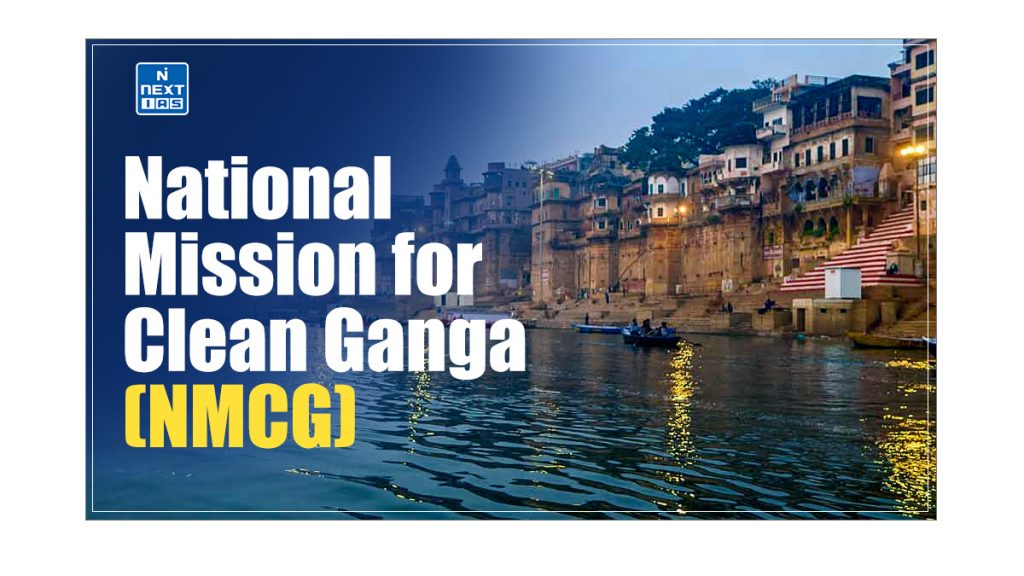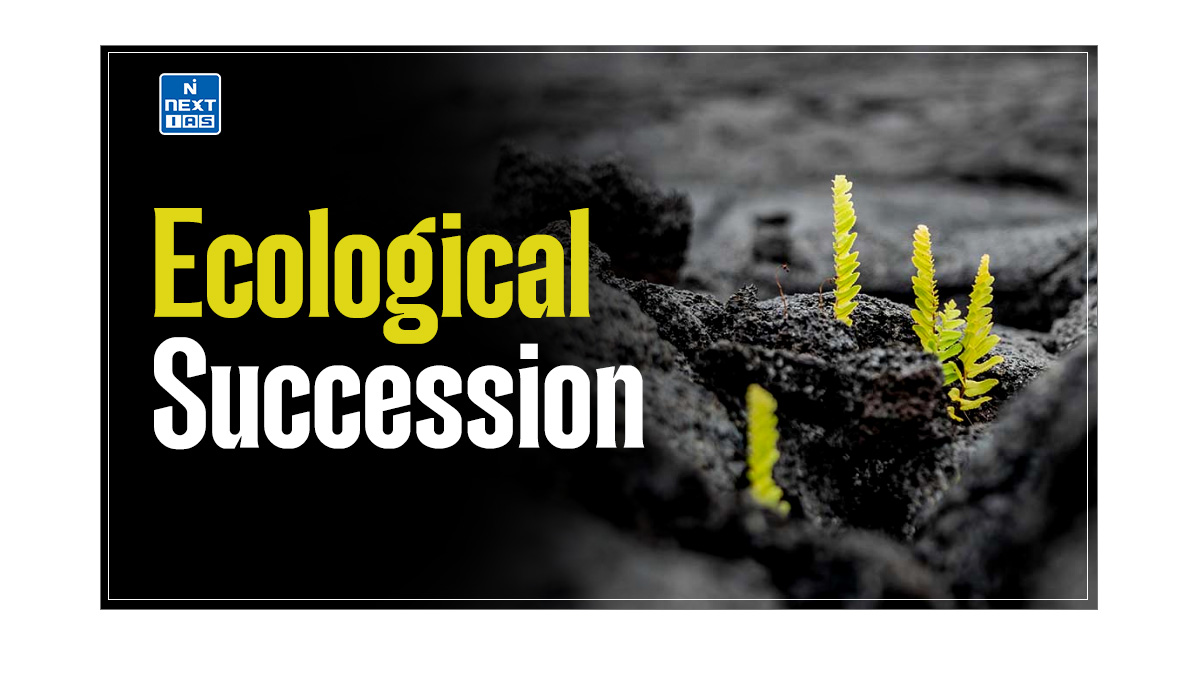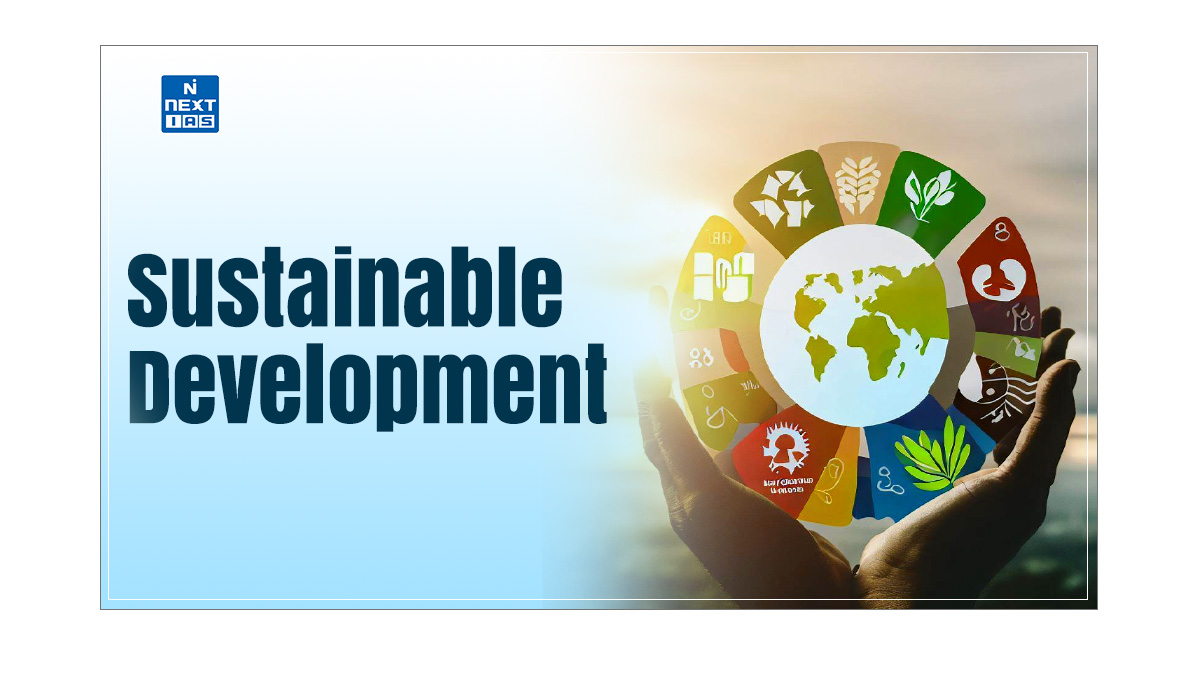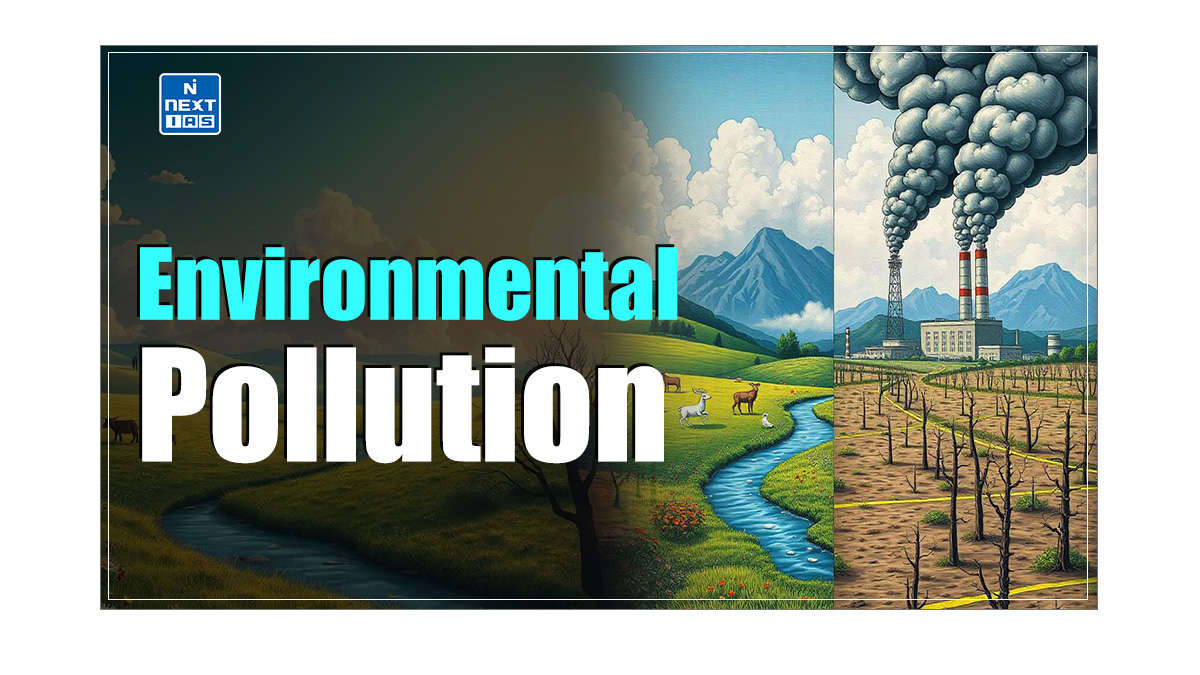
The National Mission for Clean Ganga (NMCG) represents a significant commitment by the Government of India towards the conservation and rejuvenation of the Ganga River. This article aims to provide a comprehensive overview of the National Mission for Clean Ganga, including its establishment, needs, organisational structure, major initiatives undertaken and other related aspects.
About National Mission for Clean Ganga (NMCG)
- The National Mission for Clean Ganga is a flagship program initiated by the Government of India with the primary objective of rejuvenating the Ganga River.
- On August 12, 2011, the NMCG was registered as a society under the Societies Registration Act, 1860.
- Thus, the National Mission for Clean Ganga is a programme as well as an organisation.
- The consortium functions as the implementation arm of the National Ganga River Basin Authority (NGRBA), which was formed under the Environment Protection Act, 1986 to tackle pollution-related challenges in the Ganga River.
- The objective of the Mission is to reduce pollution in the Ganga River and ensure its rejuvenation.
- The operational area of this project comprises the Ganges Basin and all states through which the river flows, including Delhi.
Need for National Mission for Clean Ganga
- Ganga is among the largest rivers in Asia, flowing for more than 2,500 kms from Goumukh in Uttarakhand to the Bay of Bengal at Ganga Sagar in West Bengal, covering 26% of India’s landmass.
- In 2010, ~1.4 billion litres of untreated sewage was dumped into Ganga, according to a Hindu article published in 2011.
- Subsequently, in 2011, the Indian Government undertook initiatives to restore the Ganga, emphasising engineering-based methods to preserve its water quality.
- However, its limited efforts to involve local communities in the restoration process resulted in an unsuccessful attempt to revive the river.
- It was against this backdrop that the NMCG was formed to take up Ganga rejuvenation in a comprehensive manner.
National Mission for Clean Ganga: Policy Details
- The Environment Protection Act (EPA), 1986, envisages a five-tier structure at national, state and district levels to undertake measures to prevent, control and abate environmental pollution in the Ganga River.
- According to the act, the model structure will comprise the following:
- National Ganga Council under the chairmanship of the Honourable Prime Minister of India
- Empowered Task Force (ETF) under the chairmanship of Honourable Union Minister of Jal Shakti (Department of Water Resources, River Development and Ganga Rejuvenation)
- National Mission for Clean Ganga
- State Ganga Committees
- District Ganga Committees in every specified district abutting the Ganga River and its tributaries in states
Organisational Structure of National Mission for Clean Ganga
- The organisation will have a two-tier management structure consisting of the Governing Council and Executive Committee, which will be headed by the Chairman of the NMCG.
- The Executive Committee has been given the authority to approve all projects valued at up to ₹1,000 crore (approximately US$ 135.7 billion).
- At the state level, State Programme Management Groups (SPMGs) will serve as the implementing arm of State Ganga Committees.
- Thus, the structure tries to bring all stakeholders on a single platform and take a holistic approach to clean and rejuvenating Ganga.
- The Chairman of the National Mission for Clean Ganga is also known as the Director General, and he/she is an Additional Secretary in the Government of India.
- The State Programme Management Groups (SPMGs), headed by senior officers of the states concerned, works under the supervision of the National Mission for Clean Ganga and ensures effective implementation of the projects.
Implementation of National Mission for Clean Ganga
The implementation of the Mission is taken under the following three phases:
Entry-Level Activities
Entry-level Activities under it include immediate, visible-impact activities such as:
- River surface cleaning,
- Rural sanitation to prevent pollution from entering the river through rural sewage drains,
- Renovation, modernisation and construction of crematoria & ghats to improve the human-river connect, etc.
Medium-Term Activities
Medium-term Activities under NMCG comprise activities that arrest municipal and industrial pollution entering the river.
Long-Term Activities
Long-term activities under NMCG consist of:
- Providing adequate flow to the river,
- Enhancing usage efficiency,
- Improving the efficiency of surface irrigation,
- Preparation of guidelines on technology, etc.
Major Initiatives of National Mission for Clean Ganga
In order to fulfil its objective, the NMCG has taken several initiatives. Some major of them have been discussed below.
Namami Gange Programme (NGP)
- The Namami Gange Programme (NGP) is a flagship initiative of the Government of India and was implemented by the NMCG.
- With a budget of ₹20,000 crore (approximately US$ 2.7 billion), the program was launched in June 2014 with an aim to achieve two main goals: the conservation and rejuvenation of the Ganga.
- The main pillars of the programme are cleaning river surfaces, treating sewerage infrastructure, achieving biodiversity, developing riverfronts, enabling afforestation, monitoring industrial effluents and increasing awareness among the public.
Read our detailed article on the Namami Gange Programme (NGP).
Ganga Knowledge Centre (GKC)
- The NMCG established the Ganga Knowledge Centre (GKC) to improve the implementation of the National Ganga River Basin Authority (NGRBA) programme.
- The main objectives of the Ganga Knowledge Centre (GKC) include:
- To create and manage knowledge resources, including analysis and modelling of diverse data sets relevant to the Ganga River Basin,
- To design and foster research innovation by identifying knowledge gaps, the need for new ideas, supporting targeted research, and
- To facilitate dialogue with stakeholders by involving the public and building partnerships with national and international universities/institutions, public & private entities and NGOs.
Centre for Ganga River Basin Management and Studies (cGANGA)
- The Centre for Ganga River Basin Management and Studies (cGanga) was established in 2016 as a data collection centre to ensure the sustainable development of the Ganga River Basin.
- cGanga functions as a think tank for the National Mission for Clean Ganga, the Ministry of Water Resources, River Development & Ganga Rejuvenation, and the Government of India.
Key Developments under National Mission for Clean Ganga
- In March 2021, the Government announced two key projects for Ayodhya.
- In December 2020, the NMCG completed 22 projects and sanctioned 17 new projects related to pollution abatement, sewerage infrastructure, afforestation and biodiversity at a total cost of Rs. 557 crore (US$ 75.6 million).
- In December 2020, cGanga, a think tank of the NMCG, signed a MoU with the Norwegian Institute of Bioeconomy Research to develop the sludge management framework in India.
- In September 2020, the Prime Minister inaugurated six projects under the Namami Gange Mission in Uttarakhand.
- The projects involved the construction of a 68 MLD (million liters per day) sewage treatment plant, the upgrade of an existing 27 MLD sewage treatment plant (STP), and the development of an 18 MLD STP in Haridwar.
- It also included the inauguration of ‘Ganga Avakolan’, the first-of-its-kind museum on Ganga, featuring its biodiversity, culture, and rejuvenation activities.
- In July 2020, the Government of India and the World Bank signed a Rs. 3,000 crore (US$ 400 million) loan agreement on a second National Ganga River Basin project for the Namami Gange programme under the NMCG scheme.
Conclusion
The National Mission for Clean Ganga represents a significant commitment by the Government of India towards the conservation and rejuvenation of the Ganga River. Through a comprehensive approach involving pollution control, riverfront development, and community engagement, the NMCG aims to restore the river’s ecological health and cultural significance. Continued efforts, effective implementation, and active participation from all stakeholders will be crucial in achieving the mission’s goals and ensuring a sustainable future for the Ganga.
Frequently Asked Questions (FAQs)
Who launched National Mission for Clean Ganga?
It was launched by the Union Government in June 2014 as a flagship initiative aimed at the conservation and rejuvenation of the Ganga river.
Is National Mission for Clean Ganga a statutory body?
No, it is not a statutory body. It is a government programme as well as an organisation under the Ministry of Environment.






